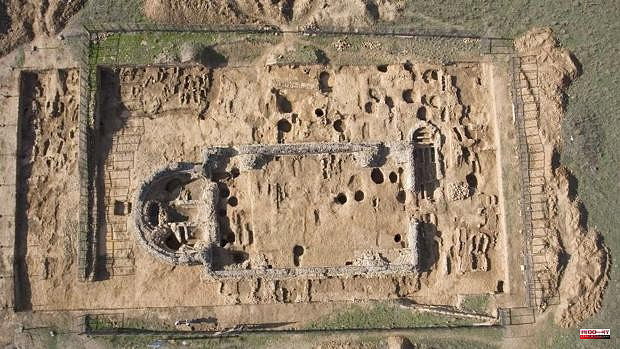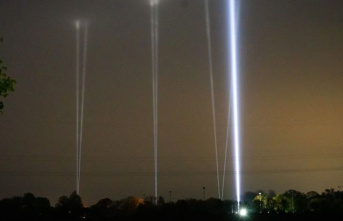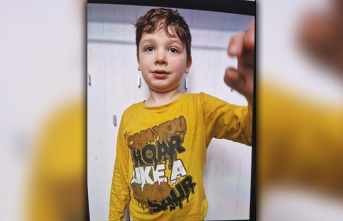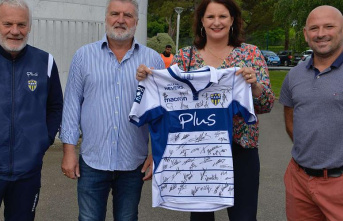The complete recovery of the Paleo-Christian basilica of Marialba de la Ribera, in Villaturiel, one of the most unique but also most forgotten monuments in the province of León, is getting closer. Through the Leonese Institute of Culture, the Diputación has approved the granting of a subsidy of 240,000 euros for the project of musealization and equipment of the projecting building of the site, all thanks to the 'Program R: Recover-Regenerate-Reactivate', they point out from the institution.
Specifically, the approved project foresees two fundamental moments in what will be the future museum visit: an initial one, located on the entrance platform to the building and in which an audiovisual contextualization document will be projected aimed at offering an adequate introduction and setting geographical and historical information around the monument, and a second part in which the visitor, from any point of the route, will be told about the entire construction process of the basilica with the support of locutions and music, and also thanks to the lighting of the various elements of the building (transformation of the apse, the pilasters, the narthex, the baptistery and other elements).
This will allow, from the shadows, to reveal the complete remains of the basilica in chronological order, as well as the historical uses and rites associated with them, as a product of successive additions and transformations, until its final moment, in which step back to the 'darkness' that was reached after its abandonment.
In order to carry out these activities, it is essential to provide the building with the necessary equipment budgeted in the project, that is, electrical installations, spotlights, motors, loudspeakers, large-format LED screens, acoustic panels, and the different structures that give support and subjection to all they.
These actions, as a whole, represent an investment of 300,000 euros, including the fees of the technicians necessary for the drafting of the project, of which the Leonese Institute of Culture, through its 'Program R', contributes 240,000 euros.
As for the history of these unique remains, it must be remembered that Ramón Menéndez Pidal highlighted four of the paleo-Christian churches and buildings in Spain, which he classified as "martyrdom" because relics of certain martyrs were preserved in them and, among these, that of Marialba de la Ribera would be the best known in the Peninsula. Other historians have considered it one of the first Paleo-Christian architectures of Roman Hispania from the 4th century. In essence, the temple was built in two phases: the first served to raise a nave with a horseshoe apse and gabled roof, and later, it was transformed into a centralized plan covered with a dome or groin vault. It also had a narthex -atrium or vestibule, very characteristic of this type of building- and a baptismal pool.
The 'Program R: Recover-Regenerate-Reactivate', launched in February 2021 with a budget of six million euros, is intended to restore historic buildings that are in the hands of city councils, neighborhood associations and foundations in the province of Leon, and, Due to its good reception in all the regions of this land, it was later reinforced with a supplementary edition, endowed with two million euros. This is the largest economic item ever destined to the recovery of Leonese heritage, by any type of institution, in a single financial year.












